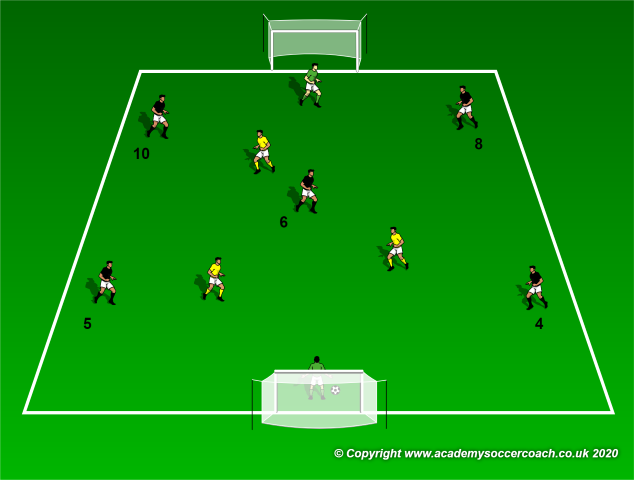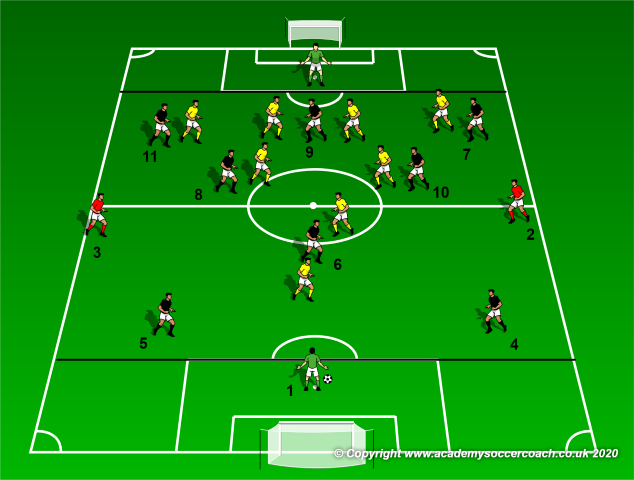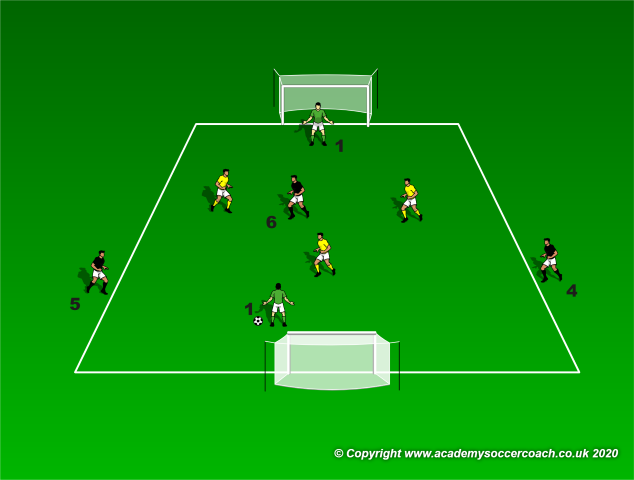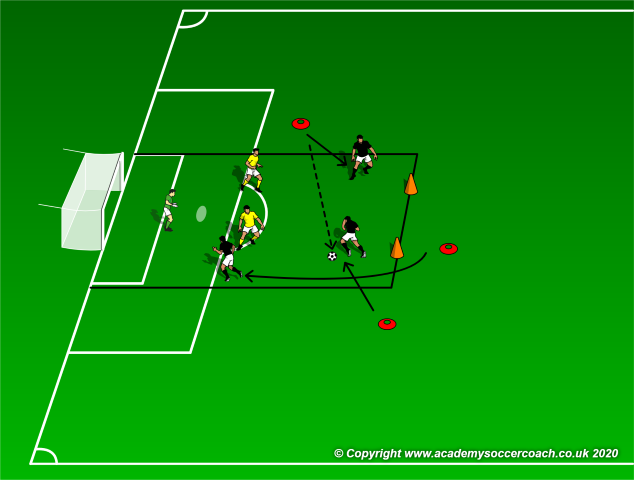By Philip Cauchi
Question - We don't have a goalkeeper coach, so I have to do all the GK training. I have to get this done in regular training sessions with the team, so do you have any ideas for me to get my goalkeeper training done at the same time as my players?
The practices shown hereunder all include the goalkeeper within team training. If you want to focus on the goalkeeper for a part of the session you may do so using the practices shown below. You can dedicate part of each practice within a training session to focus on the goalkeeper. The aim and outcomes you want your goalkeepers to accomplish should be clear and concise. Therefore, as you have to take care of not just the goalkeeper but the whole team, you must be clear and keep things as simple as possible.
What the goalkeepers will be working on should be communicated with them before the practice starts. It can be even more beneficial if you send the session in advance to the goalkeeper with the outcomes (key coaching points) explained. Sending videos prior to the session of these outcomes will also help in having the goalkeepers understand what is required of them during the training session.
It is also a great idea to film the training session and if possible to acquire videos of matches where you as the coach can discuss issues with the goalkeepers and point out certain defects that need further refinement. You can meet with the goalkeeper after training to review the performance, before the next training session or send a video of it. I would prefer meeting in person over sending a video so to have a two way communication channel with the goalkeeper, where certain problems that the goalkeeper faces will be discussed and explained in greater detail.
Practice 1: Retain possession versus scoring.

Area of play: 25 yards by 20 yards.
Description: Play is 7v3 with the goalkeepers with the team retaining possession of the ball. If the defenders win the ball they can score in either goal. The team in possession aims to make ten consecutive passes to score a point.
Coaching outcomes for the goalkeeper:
1. Provide support angle to teammates.
2. Stance to receive the ball.
3. Oriented first touch.
4. Aim to play the ball to the furthest player to break lines.
Practice 2: The build-up game.

Area of play: From one penalty area to another and between touchlines.
Description: Two teams of eight outfield players. Two neutral players play as wingers and two goalkeepers also play as neutral players. Teams score by passing the ball to the opposite target player inside the penalty area. Progress to a normal match. The goalkeeper should continuously communicate with his team especially the two central defenders.
Coaching outcomes for the goalkeeper:
1. Provide a support angle to the central defenders and midfielders.
2. Oriented first touch.
3. Quality of passes – weight and direction.
4. Play line breaking passes.
5. Switch the point of attack when receiving the ball out of pressured zones.
Practice 3: 5v3 rondo with negative transition.

Area of play: 20 yards by 15 yards.
Description: The attacking team aims to keep possession of the ball for a pre-assigned number of sequential passes. This team is composed of a goalkeeper in each goal, two central defenders and a defensive midfielder. If the defending team wins the ball they may score on either goal.
Coaching outcomes for the goalkeeper:
1. Move to provide a support angle.
2. Oriented first touch.
3. Quality of passes – weight and direction.
4. Play line breaking passes – aim to play the ball behind the opponents.
5. Switch the point of attack when receiving the ball out of pressured zones.
Practice 4: 2v2+GK functional practice.

Area of play: 25 yards by 16 yards.
Description: The three attacking players start the attack from various positions to score against the two defenders and the goalkeeper. If the defending team wins the ball they counter by dribbling through the middle gate designated by the cones.
Coaching outcomes for the goalkeeper:
1. Communicate constantly using short and clear words with the two defenders.
2. Stay on feet.
3. Reduce the shooting angle.
4. Initiate the counter attack immediately on winning the ball.
By Philip Cauchi


